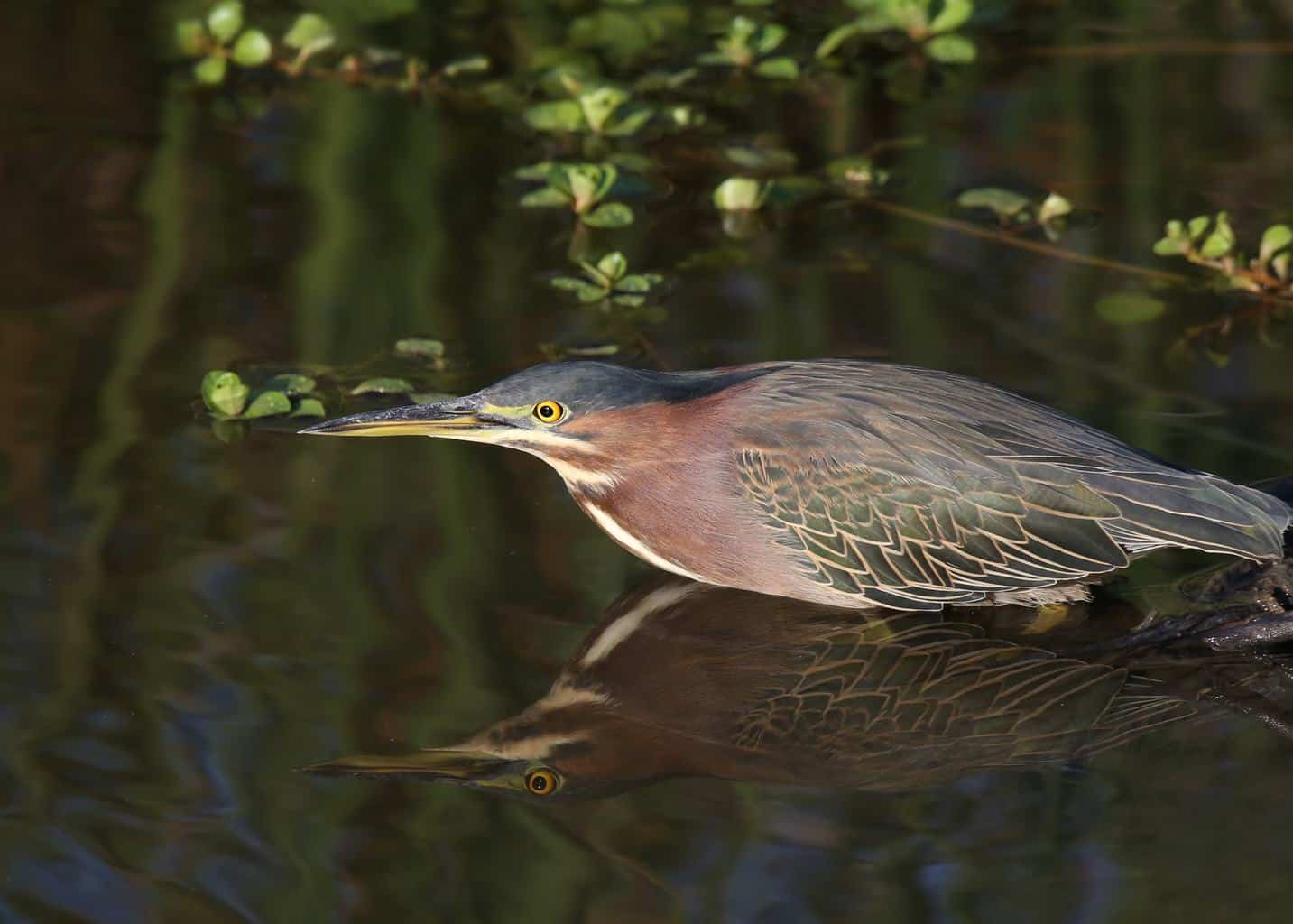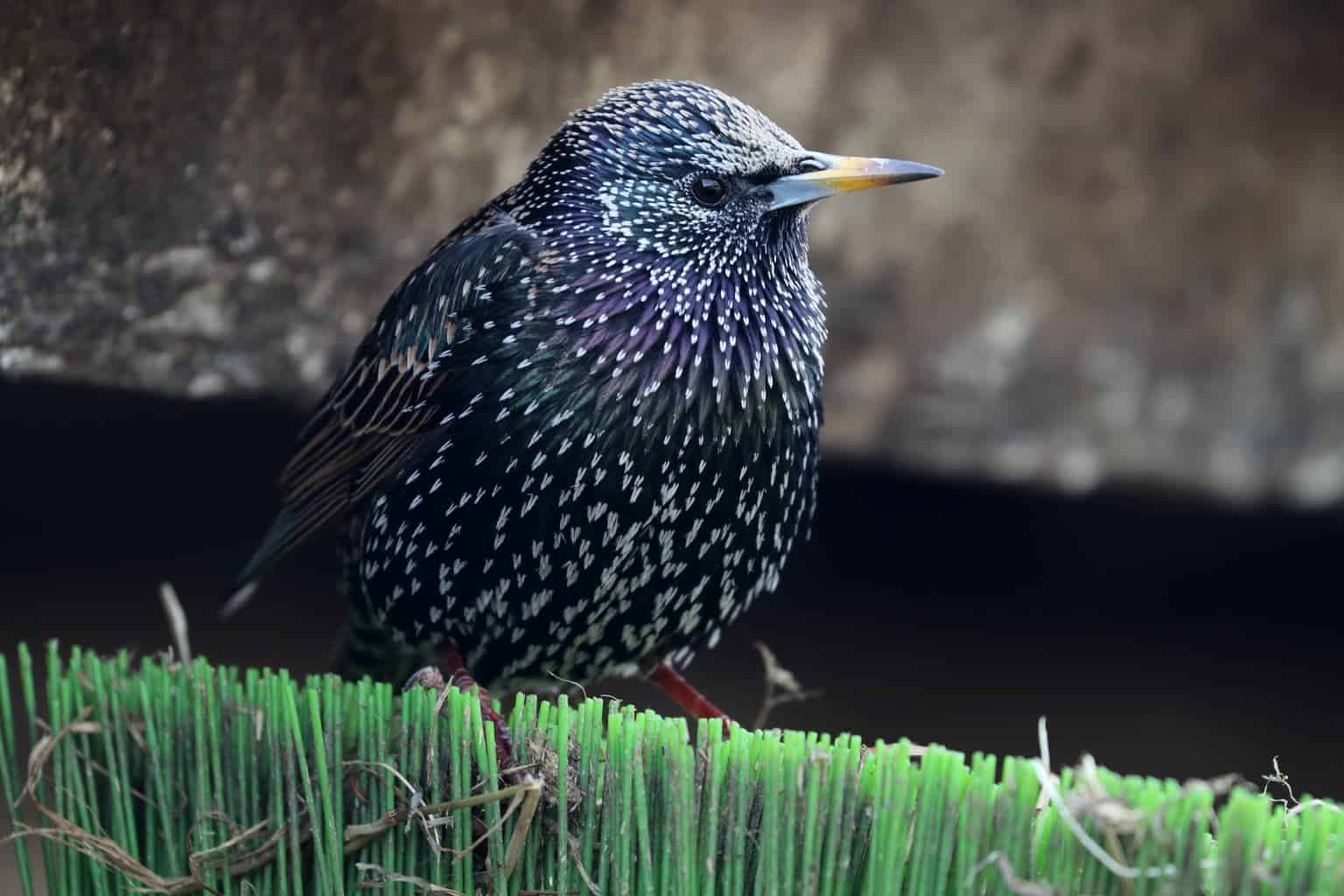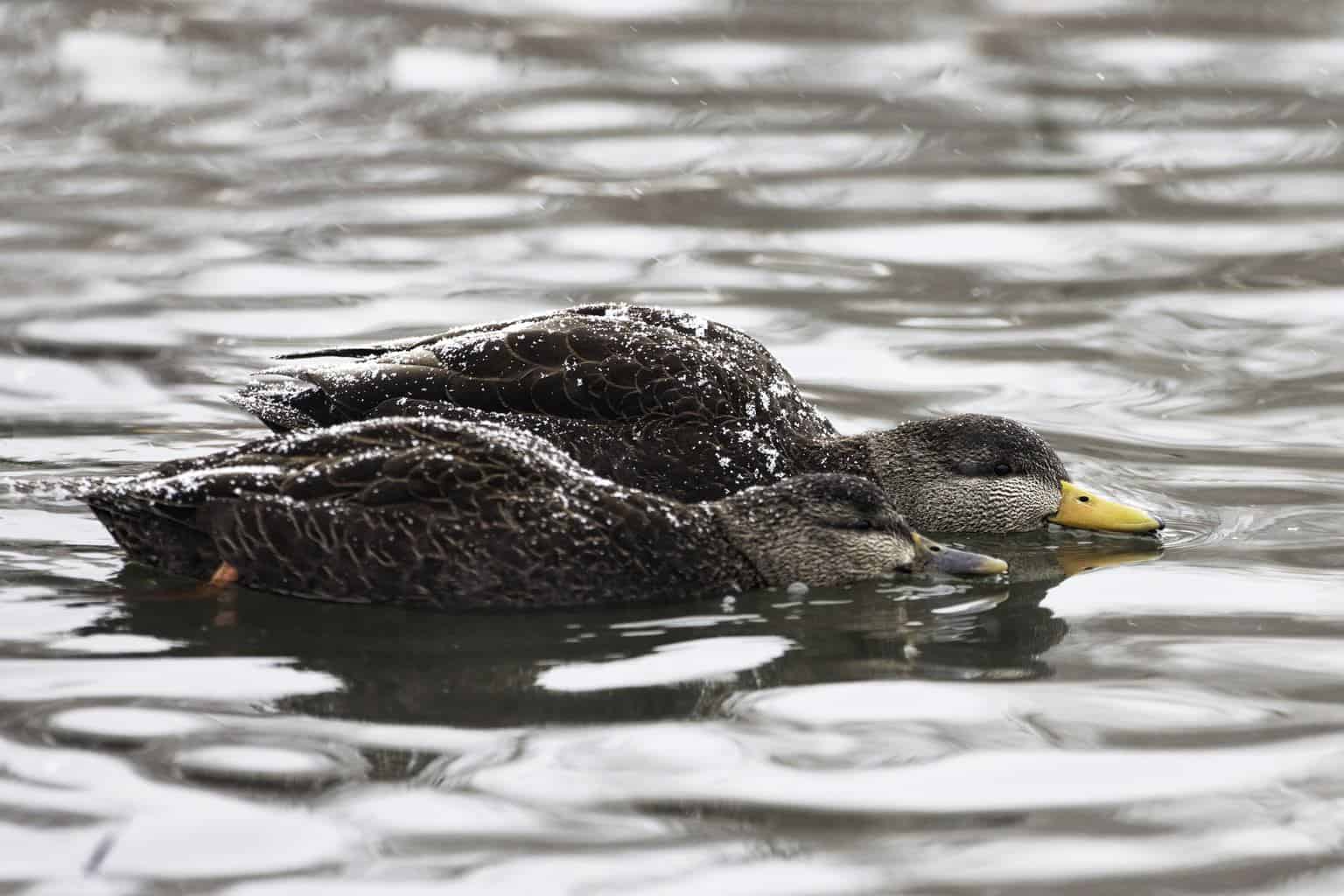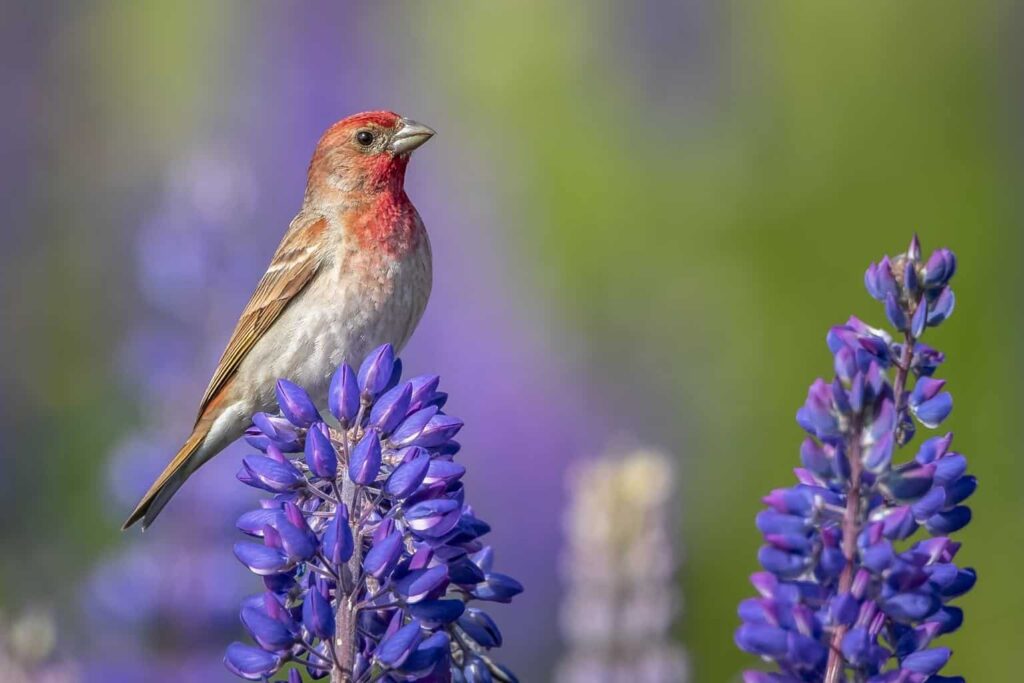Michigan is the tenth largest state in the United States, so it should not be surprising that it is home to a variety of beautiful bird species.
All types of birds commonly inhabit Michigan’s litany of islands, dunes, mountains, and peninsulas. This is why we consider Michigan to be a bird watcher’s paradise! There are, in fact, 450 species of birds in Michigan! Incredible, huh?
It’s possible to see most of these birds throughout the year, and what may surprise some people is that some of Michigan’s birds are nocturnal! So, don’t worry if you go out at dusk; you will still be able to see some breathtaking birds!
In this guide, we will talk about 15 exciting bird species that you can find in Michigan. We will tell you where they live, what they eat, and what time of the year is best for seeing them.
Of course, we’re not going to talk about all 450 species; it’s beyond the scope of a single article. What we want to do, however, is show you some of the more striking and popular birds that are easy to spot in Michigan. We made sure to keep an interesting mix between common birds and rare birds. Even better, we have color-coded them!
Red Birds to Watch for in Michigan
Northern Cardinal

- Scientific Name: Cardinalis cardinalis
- Length: 8.3–9.3 inches
- Weight: 1.58 oz
- Wingspan: 9.8 to 12.2 inches
The Northern Cardinal, also known as the “redbird,” is a beautiful songbird with a long tail and a short, thick beak. Cardinals have an amusing chirping voice that some say is metallic-sounding, but we say their voices are distinctive!
Cardinals will sit with their tails hanging down while they sing numerous melodies, making them an extremely appealing bird to watch! Their brilliant plumage can be especially striking in the cooler seasons when their red body color contrasts with grey branches and white snow.
One of the things that make these year-round residents stand out is that male Cardinals are mainly red, with black faces. They are quite flashy and beautiful to look at. The females are a lighter brown color, though red can be seen in their wings and tail.
The male Cardinal is territorial, which means he will attack other males that encroach upon his territory! Some would believe the male Cardinal is solitary because of this behavior, but he isn’t; he just wants to protect his mate, nest, and eggs.
The cardinal feeds on seeds as well as other foods. They prefer black sunflower seeds, safflower seeds, white millet, saffron, and black oil sunflower seeds. As far as birds go, they have expensive taste! However, they are also known to enjoy crushed peanuts crushed, berries, or corn.
Northern Cardinals are common backyard birds and can be seen around a bird feeding station, though they can also be seen hopping around bushes, perching in tree branches, or searching the ground for seeds. Some of their most common territories include heavily wooded areas, even city parks!
House Finch

- Scientific Name: Haemorhous mexicanus
- Length: 7.8 inches
- Weight: 0.75 oz
- Wingspan: 3.3 inches
The little House Finch is a charming seed-eating bird with beaks that are surprisingly large for its size, long tails, and fairly flat heads.
Male House Finches are grey, with red faces and upper breasts. However, females are a more drab grey-brown. They are surprisingly active little birds, and many people find these finches to be rather entertaining to watch!
House Finches in Michigan can be seen in numerous locations due to their resourcefulness. A few places where they can be frequently seen include farms, yards, downtown, and even along woodland edges.
Because they are tiny, they make cute little nests out of twigs, small sticks, and other debris that they can pick up; on occasion, this can include string. The female is responsible for building their cup-shaped nests, and she is such a skilled builder that it only takes her two days to make them!
If you’re curious about their diets, these native birds are not very picky; they prefer numerous kinds of seeds, including grass seed. If you want to lure these common feeder birds into your yard, the best thing to do is leave a wide variety of mixed seeds in your bird seed feeder; very soon, they will find the food and pick out their favorite seeds!
Blue Birds to Watch for in Michigan
Eastern Bluebird

- Scientific Name: Sialia sialis
- Length: 6.3–8.3 in
- Weight: 0.95–1.20 oz
- Wingspan: 9.8–12.6 in
Belonging to the Thrush family, the Eastern Bluebird is a big-eyed small bird with a large, rounded head and a straight bill. Males are quite flashy, with deep blue feathers on their entire body and either brick-red or rust-red plumage on their necks. In contrast, the females have duller colors; grey with brownish-orange breasts.
These pretty birds prefer to live in meadows and trees, though as people continue building nesting boxes and birdhouses, bluebirds can now be commonly seen in open areas such as along roads or fields.
You may be surprised to learn that the Eastern Bluebird can reach speeds of up to 17 miles per hour. Bluebirds are native to North America. Bluebird gardeners love not only their ability to control pests but also their bright colors.
These birds eat berries and fruits from small trees and bushes. You can try placing dried fruits or chopped peanuts in bird feeders to try and attract them. There are other ways to interest these birds, the best of which is to offer them bugs.
Blue Grosbeak

- Scientific Name: Passerina caerulea
- Length: 5.9-6.3 inches
- Weight: 0.9-1.1 oz
- Wingspan: 11 inches
The beautiful Blue Grosbeak is a stocky songbird with a huge, triangular bill that appears to cover the entire front of its face, from the neck to the forehead. They are rather striking to look at because of their plumage. Adult males have a small black mask on their faces, while their feathers are deep blue with chestnut barring on their feathers, and their beaks are black and silver. Females are more subdued cinnamon, with deeper coloring on their heads. Both males and females have blue tails.
Unfortunately, they are rather timid and flighty. You must be very quiet and patient if you do not want to scare the Blue Grosbeak away when you’re lucky enough to see it.
You can often hear the sweet sound of this bird. The Blue Grosbeak’s husky warble song is a common sound in the Southern states in the summer. Their voices are among some of the most beautiful in the avian kingdom, which shouldn’t surprise anyone interested in these singers!
These birds are shy, and because of that, they frequently hide. Sometimes, they can be seen in the open, though. Signs of a panicking Blue Grosbeak include restless movement and frequent tail stretches.
This shy bird feeds on insects, including spiders and slugs, though they may occasionally dine on grains, fruit, and seeds. They are quite opportunistic and find their food on the ground.
Cerulean Warbler
- Scientific Name: Setophaga cerulea
- Length: 4.3 in
- Weight: 0.3-0.4 oz
- Wingspan: 7.9 inches
The tiny Cerulean Warbler is a blue songbird with a thin, pointed bill and unique barring on its wings. Despite their small size, they are gorgeous to behold, and their voices are unique.
The male Cerulean Warbler’s song is particularly noteworthy, as it begins with three notes, followed by four warbling trills, and ends on a high note. It is one vocalization that people will have a tough time forgetting. Once you hear it for the first time, you will want to listen to them for a long time.
These adorable little birds live in older forests with tall trees, preferring to nest in evergreen forests during the winter.
Green Birds to Watch for in Michigan
Mourning Warbler
- Scientific Name: Geothlypis Philadelphia
- Length: 3.9-5.9 inches
- Weight: 0.5-0.6 oz
- Wingspan: 7 inches
The small Mourning Warbler is one of the most colorful birds in Michigan. The males have grey hoods and black patches on their necks and breasts. Both the males and females have dull olive-green upperparts with yellow undersides, pink legs, and a thin, pointed beak.
During the fall, their colors become duller, which makes it difficult to separate them from other Warbler species.
They prefer to roost in heavy vegetation, though they do not like to be more than five or ten feet above the ground. They prefer to eat insects, spiders, caterpillars, beetles, and berries.
Green Heron

- Scientific Name: Butorides virescens
- Length: 16 -18.1 inches
- Weight: 8.5 oz
- Wingspan: 25 – 27 inches
The Green Heron is a small heron with a velvety-green back, chestnut-colored body, and darker-colored head. The bill is black with a long, sharp point. Females are smaller than adult males and are slightly lighter, especially during the breeding season.
They are fish-eating birds, equipped with a very sharp beak and the wits to use small twigs and insects as bait to catch fish. While many birds prefer to eat seafood, the Green Heron is one of few that is naturally inclined to use tools. This makes them fascinating to watch.
You can see these small and beautiful birds lined up along lakes, ponds, swamps, riverbanks, especially trees, shrubs, and swamp plants. Their nests can be found in various locations, including willow thickets, mangroves, dry forests, and even the open swamp.
Orange Birds to Watch for in Michigan
American Robin

- Scientific Name: Turdus migratorius
- Length: 8-11 inches
- Weight: 2.7 oz
- Wingspan: 12-16 inches
The American Robin is one of Michigan’s many songbirds. Contrary to popular belief, though, they can be seen all year-round, not just in the summer. They migrate to different areas during the winter; that way, they can locate more food. In the warmer seasons, they return to Michigan once again.
Fruits are the American Robin’s favorite food, and it’s the food that causes them to migrate towards wintering grounds in the South and Northern areas in summer.
They are a pretty nice combination of gray and orange color. Their upper body is brown, and their lower body, towards the belly, is orange. They also have a white patch below their tail.
These birds are commonly called “Robin Red-Breasts,” and they are voracious seed and insect-eaters. They are not particularly picky about their food, which means they can thrive just about anywhere they decide to live. You can attract them to your backyard with fruit-bearing plants or a bird bath.
Something you might find interesting is that they are considered to be wanderers, given how frequently they travel. American robins like to live in forests, backyards, parks, and grassy areas. Robins are found year-round in the Americas, and some migrate north to spend the summer in Alaska.
Orchard Oriole

- Scientific Name: Icterus spurius
- Length: 5.9-7.1 inches
- Weight: 0.6-1.0 oz
- Wingspan: 9.8 inches
It’s easy to differentiate between the sexes of the Orchard Oriole, as the male and female are colored quite differently from one another. The male is a striking black-and-red chestnut hue, while the female is yellow-green with white wing bars. Both the males and females are beautiful birds, making them very popular with backyard bird watchers.
Orchard Orioles eat insects and drink flower nectar, along with fruit, especially berries. You might think it is strange, but they prefer sweet foods, so you will not be able to lure them into your yard with nuts or seeds. If you want them to visit, it is best to leave various berries for them to choose from.
The Orchard Oriole’s favorite places to live include open lands, such as parks, riversides, pastures, and areas planted with deciduous trees.
Yellow Birds to Watch for in Michigan
American Goldfinch

- Scientific Name: Spinus tristis
- Length: 4.2–5.4 inches
- Weight: 0.39–0.71 oz
- Wingspan: 7.4–8.8 in
The American Goldfinch is a very striking bird to behold. During the spring and summer, they have a gorgeous yellow-and-black coloration, with a black cap on their head and black wings. However, fall and winter birds molt to pale yellow with tan and brown wings and tails.
They are very brightly colored, active little birds that can almost be mesmerizing to watch! The American Goldfinch lives in orchards, agricultural lands, and roadsides.
Evening Grosbeak

- Scientific Name: Hesperiphona vespertina
- Length: 6.3 to 8.7 in
- Weight: 1.9 oz
- Wingspan: 12 to 14 inches
Evening Grosbeaks are large birds that travel in massive flocks. You will most likely find breeding birds in coniferous forests.
The males are yellow-and-black, with white wing patches. However, the females are mostly grey, with black and white feathers in their wings. Their necks are a greenish shade.
Evening Grosbeaks breed in the dense, thriving coniferous forests of North America and the Rocky Mountains, including spruce, pine-oak, pine-juniper, and spiny forests.
Kirtland’s Warbler
- Scientific Name: Setophaga kirtlandii
- Length: 5.8 inches
- Weight: 0.4 to 0.6 oz
- Wingspan: 8.6 inches
Kirtland’s Warblers are medium-sized birds that breed in Michigan’s small jack pines. They have black faces with a white ring around each eye. Their underparts are yellow, and their sides are streaked with black.
The female Kirtland’s Warblers get to choose their habitats, and males follow. They choose the best open woodlands with plenty of insects and foliage. Their conservation status is “near threatened,” although populations have been increasing recently.
You will find Kirtland’s Warblers all over Michigan, from Kalkaska County to Lake Huron. They breed in Michigan and spend the winters in the Bahamas nesting in jack pine forests.
Other Birds to Watch for in Michigan
European Starling

- Scientific Name: Sturnus vulgaris
- Length: 8.5 inches
- Weight: 2.5 to 3.5 oz
- Wingspan: 12.2 to 15.8 inches
The European Starling also called the Common Starling, is an adorable and brilliant, curious bird. Males and females are iridescent, with white spots at the tips of their feathers, which gives them the appearance of being “star-strewn.”
This common bird is a very bright, industrious little stocky bird that can mimic numerous sounds. It may be surprising to note that they make incredible pets, and they can learn how to talk!
While some people think these invasive species are nuisances, that couldn’t be further from the truth! They are amusing, inquisitive little birds that can delight people of all ages with their antics! Did you know that Beethoven had a pet European Starling, for which he even wrote a song?
These aggressive birds can eat a wide variety of food, including seeds, nuts, grains, fruit, vegetables, and eggs, and will chase away competing birds. Surprisingly, many common Starlings enjoy meat as well.
You will find Starlings everywhere in Michigan. From the countryside and city parks to lawns and fields. They like zig-zagging over the grass and always seem like they are in a rush. In Michigan’s countryside, Starlings travel in small groups. They are experienced fliers at speeds up to 48 mph.
American Black Duck

- Scientific Name: Anas rubripes
- Length: 21 to 21 inches
- Weight: 3.3 – 11 Ibs
- Wingspan: 35 to 37 inches
American Black Ducks are commonly found on the East Coast of North America. They can be found in either fresh or saltwater in Michigan.
The presence of American Black Ducks extends to ponds and salt marshes, where they can be found in hybridized flocks. American Black Ducks migrate from the southeast of Manitoba to Minnesota and east through Michigan and Wisconsin.
They spend the winters in the southern parts like Florida and Virginia. They often travel with Mallards. This is attributed to the similar features they have with each other, especially the female Mallards.
They both have the same yellowish olive bills, dark brown flanks, and grayish faces. Although American Black Ducks are of low conservation concern, their numbers are declining rapidly. This is mainly due to hunting season, and efforts to restrict hunting have helped prevent habitat loss.
Snowy Owl

- Scientific Name: Bubo scandiacus
- Length: 20.5 to 27.9 inches
- Weight: 3.5 to 6.5 Ibs
- Wingspan: 49.6 to 57.1 inches
Snowy Owls are one of the most elegant birds to spot in Michigan. They have a dense white coat of feathers that looks majestic over snowy lakes. Many myths and legends surround the Snowy Owl, including the Native American tale that states owls are messengers of the dead.
These familiar birds also have feathers covering their feet, which provides more protection from freezing temperatures. Snowy Owls males and females look similar, but the females tend to have denser markings on their bodies. These marks are either black or brown and can be found on their wings, too.
You will commonly find this elegant bird at low altitudes. They like to land on fence posts, poles, or on the ground in open areas. It isn’t uncommon to see a snowy owl perched on your roof during the winter! They may not be the most vocal of birds, but they are stunning. Some people call them “white phantoms” because of how quiet and swift they are.
Snowy Owls are more frequent in Michigan during winter. They tend to be around agricultural lands and on the shorelines of lakes.
They breed in the arctic tundra, where the freezing climate and treeless fields are more suitable for reproduction. In the summer, the arctic tundra does not get dark, which gives them the ability to hunt throughout the day.
Closing Thoughts
Bird watchers can spot countless kinds of birds throughout the year, from tiny seed-eaters and delicate songbirds to magnificent birds of prey and numerous species of ducks. No set time of the year is best for bird-watching. It all depends on what you want to see.
Did you know that you can even get your children interested in bird watching in the state of Michigan? As long as they are curious, willing to be quiet, and pay attention, children can become very enthusiastic and curious bird-watchers. Take them along and help them spot their favorite birds.
The number of nocturnal bird species in Michigan is fascinating. You won’t find another state with this many night birds active at night!
One thing that we recommend for all bird-watchers is to keep a notebook on hand. That way, you can document the birds that you have seen.

